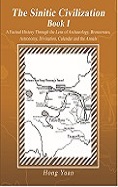
Sinitic Civilization-Book 1
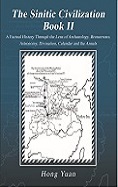
Sinitic Civilization-Book 2
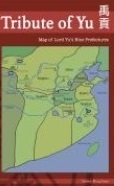
Tribute of Yu

Heavenly Questions
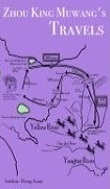
Zhou King Muwang's Travels
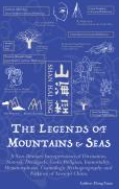
The Legends of Mountains & Seas
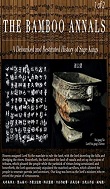
The Bamboo Annals - Book 1
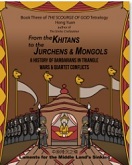
The Scourge-of-God-Tetralogy:
From the Khitans to the Jurchens & Mongols: A History of Barbarians in Triangle Wars and Quartet Conflicts
(available at iUniverse;
Google;
Amazon;
B&N)
|
|
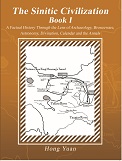
 This website's contents are the result of 20 years' writings --that could be compared to the "archaeological deposits" in a literary sense.
The freelance-style writings on the website were not proof-read.
Portion of the writings, i.e., related to Pre-History, Xia, Shang, Zhou, Qin, and Han dynasties, was extracted, polished, reconciled, and synthesized into
The Sinitic Civilization - Book I which is
available now on
Barnes & Noble,
Amazon,
Google Play|Books
and
Nook.
Book II is
available now on
Amazon
and Barnes & Noble.
Check out this webmaster's 2nd edition --that realigned Han dynasty's reign years strictly observing the Zhuanxu-li calendar of October of a prior lunar year to September of the following lunar year
and
cleared this webmaster's blind spot on the authenticity of the Qinghua University's Xi Nian bamboo slips as far as Zhou King Xiewang's 21 years of co-existence with Zhou King Pingwang was concerned.
To give the readers a heads-up, this webmaster had thoroughly turned the bricks concerning the Sinitic cosmological, astronomical, astrological, historical, divinatory, and geographical records, with the indisputable discovery
of the fingerprint or footprint of the forger for the 3rd century A.D. book Shang-shu (remotely ancient history),
and
close to 50 fingerprints or footprints of the forger of the contemporary version of The Bamboo Annals --a book that was twice modified and forged after excavation.
All ancient Chinese calendars had been examined, with each and every date as to the ancient thearchs being examined from the perspective how they were forged or made up.
Using the watershed line of Qin Emperor Shihuangdi's book burning to rectify what was the original before the book burning,
this webmaster filtered out what was forged after the book burning of 213 B.C.
This webmaster furthermore filtered out the sophistry and fables that were rampant just prior to the book burning, and validated the history against the oracle bones, bronzeware and bamboo slips.
There are dedicated chapters devoted to interpreting Qu Yuan's poem Asking Heaven, the mythical mountain and sea book Shan Hai Jing, geography book Yu Gong (Lord Yu's Tributes), and Zhou King Muwang's travelogue Mu-tian-zi Zhuan, as well as a comprehensive review of ancient calendars, ancient divination, and ancient geography.
One chapter is focused on the Huns, with a comprehensive overview of the relationship between the Sinitic people and the barbarians since prehistory.
The book has appendices of two calendars: the first Zhuanxu-li anterior quarter remainder calendar (247 B.C.-85 A.D.) of the Qin Empire, as well as a conversion table of the sexagenary years of the virtual Yin-li (Shang dynasty) quarter remainder calendar versus the Gregorian calendar, that covers the years 2698 B.C. to 2018 A.D.
Refer to
Introduction_to_The_Sinitic_Civilization,
Afterword,
Table of Contents - Book I (Index)
and
Table of Contents - Book II (Index)
for details.
This website's contents are the result of 20 years' writings --that could be compared to the "archaeological deposits" in a literary sense.
The freelance-style writings on the website were not proof-read.
Portion of the writings, i.e., related to Pre-History, Xia, Shang, Zhou, Qin, and Han dynasties, was extracted, polished, reconciled, and synthesized into
The Sinitic Civilization - Book I which is
available now on
Barnes & Noble,
Amazon,
Google Play|Books
and
Nook.
Book II is
available now on
Amazon
and Barnes & Noble.
Check out this webmaster's 2nd edition --that realigned Han dynasty's reign years strictly observing the Zhuanxu-li calendar of October of a prior lunar year to September of the following lunar year
and
cleared this webmaster's blind spot on the authenticity of the Qinghua University's Xi Nian bamboo slips as far as Zhou King Xiewang's 21 years of co-existence with Zhou King Pingwang was concerned.
To give the readers a heads-up, this webmaster had thoroughly turned the bricks concerning the Sinitic cosmological, astronomical, astrological, historical, divinatory, and geographical records, with the indisputable discovery
of the fingerprint or footprint of the forger for the 3rd century A.D. book Shang-shu (remotely ancient history),
and
close to 50 fingerprints or footprints of the forger of the contemporary version of The Bamboo Annals --a book that was twice modified and forged after excavation.
All ancient Chinese calendars had been examined, with each and every date as to the ancient thearchs being examined from the perspective how they were forged or made up.
Using the watershed line of Qin Emperor Shihuangdi's book burning to rectify what was the original before the book burning,
this webmaster filtered out what was forged after the book burning of 213 B.C.
This webmaster furthermore filtered out the sophistry and fables that were rampant just prior to the book burning, and validated the history against the oracle bones, bronzeware and bamboo slips.
There are dedicated chapters devoted to interpreting Qu Yuan's poem Asking Heaven, the mythical mountain and sea book Shan Hai Jing, geography book Yu Gong (Lord Yu's Tributes), and Zhou King Muwang's travelogue Mu-tian-zi Zhuan, as well as a comprehensive review of ancient calendars, ancient divination, and ancient geography.
One chapter is focused on the Huns, with a comprehensive overview of the relationship between the Sinitic people and the barbarians since prehistory.
The book has appendices of two calendars: the first Zhuanxu-li anterior quarter remainder calendar (247 B.C.-85 A.D.) of the Qin Empire, as well as a conversion table of the sexagenary years of the virtual Yin-li (Shang dynasty) quarter remainder calendar versus the Gregorian calendar, that covers the years 2698 B.C. to 2018 A.D.
Refer to
Introduction_to_The_Sinitic_Civilization,
Afterword,
Table of Contents - Book I (Index)
and
Table of Contents - Book II (Index)
for details.
|
|
Table of lineages & reign years:
Sovereigns & Thearchs;
Xia-Shang-Zhou dynasties;
Zhou dynasty's vassalage lords;
Lu Principality lords;
Han dynasty's reign years
(Sexagenary year conversion table-2698B.C.-A.D.2018; 247B.C.-A.D.85)
|





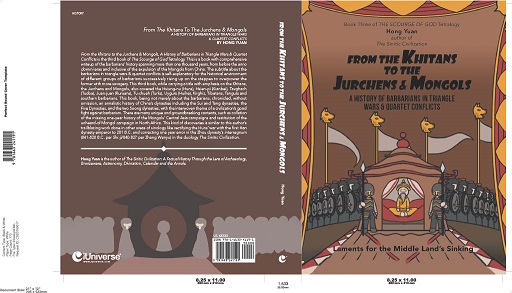
Epigraph|Preface|Introduction|T.O.C.|Afterword|Bibliography|References|Index
(available at iUniverse|Google|Amazon|B&N)
|
|
KOREA - FUZZY ANCIENT GEOGRAPHY
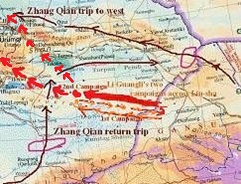 For details on when the east met with the west, see this webmaster's discussion on the Huns, the Yuezhi, the Tarim Mummies, the Yuezhi-Yushi misnomer,
the Mongoloid-Caucasoid admixture at 2000 B.C.E.,
the fallacy of the Aryan bearing of the Chinese civilization,
the fallacy of the Yuezhi jade trade,
the Yuezhi migration timeline,
as well as
the location of the Kunlun Mountain,
Queen Mother of the West,
the legendary book of mountains and seas at the Imperial China blog,
and the Qiang's possible routes of passage into Chinese Turkestan
at
http://www.imperialchina.org/Barbarians.htm which was embedded within the
Huns.html and
Turks_Uygurs.html pages.
(Note that Western Queen Mother had the prototype in an "earth mother" deity, not related to Queen Sheba of Charles Hucker.
The Mt. Kunshan jade was more likely the Mt. Huoshan jade in the Han dynasty book Huai Nan Zi, or the Mt. Yiwulü jade or the Kunlun jade that were juxtaposed together in the same book Huai Nan Zi, not related to Queen Mother of the West.
http://www.sino-platonic.org/complete/spp115_chinese_proto_indo_european.pdf provides another perspective of looking at things of the past from the perspective of language cognates. Rather believing that the Indo-Europeans ever invaded China and gave the Sinitic people the language, we could actually deduce that "Old Chinese", for its 43% correlation with the Proto-North-Caucasian, rather 23% with the Proto-Indo-European, was the source for both the cognates of the Proto-North-Caucasian and the Proto-Indo-European -- with the Proto-North-Caucasian falling under the umbrella of the Dene-Caucasian (Sino-Caucasian) Language Family that encompassed the [Proto-North-]Caucasian, Yeniseian and Sino-Tibetan languages. This is because our cousins, i.e., the N haplogroup people, relocated to North Asia and then to Latvia, Estonia, Finland and Scandinavia, bringing along the Sinitic language to the Proto-North-Caucasian who in turn gave it to the Proto-Indo-European. Note the Sinitic language cognates' 74% correlation with the Proto-Tibeto-Burman who split from the Sinitic people merely 5000-6000 years ago.)
For details on when the east met with the west, see this webmaster's discussion on the Huns, the Yuezhi, the Tarim Mummies, the Yuezhi-Yushi misnomer,
the Mongoloid-Caucasoid admixture at 2000 B.C.E.,
the fallacy of the Aryan bearing of the Chinese civilization,
the fallacy of the Yuezhi jade trade,
the Yuezhi migration timeline,
as well as
the location of the Kunlun Mountain,
Queen Mother of the West,
the legendary book of mountains and seas at the Imperial China blog,
and the Qiang's possible routes of passage into Chinese Turkestan
at
http://www.imperialchina.org/Barbarians.htm which was embedded within the
Huns.html and
Turks_Uygurs.html pages.
(Note that Western Queen Mother had the prototype in an "earth mother" deity, not related to Queen Sheba of Charles Hucker.
The Mt. Kunshan jade was more likely the Mt. Huoshan jade in the Han dynasty book Huai Nan Zi, or the Mt. Yiwulü jade or the Kunlun jade that were juxtaposed together in the same book Huai Nan Zi, not related to Queen Mother of the West.
http://www.sino-platonic.org/complete/spp115_chinese_proto_indo_european.pdf provides another perspective of looking at things of the past from the perspective of language cognates. Rather believing that the Indo-Europeans ever invaded China and gave the Sinitic people the language, we could actually deduce that "Old Chinese", for its 43% correlation with the Proto-North-Caucasian, rather 23% with the Proto-Indo-European, was the source for both the cognates of the Proto-North-Caucasian and the Proto-Indo-European -- with the Proto-North-Caucasian falling under the umbrella of the Dene-Caucasian (Sino-Caucasian) Language Family that encompassed the [Proto-North-]Caucasian, Yeniseian and Sino-Tibetan languages. This is because our cousins, i.e., the N haplogroup people, relocated to North Asia and then to Latvia, Estonia, Finland and Scandinavia, bringing along the Sinitic language to the Proto-North-Caucasian who in turn gave it to the Proto-Indo-European. Note the Sinitic language cognates' 74% correlation with the Proto-Tibeto-Burman who split from the Sinitic people merely 5000-6000 years ago.)
Li Hui of Fudan University of China analyzed the Asian DNAs to have derived a conclusion that ancestors of the [East] Asians possessed a distinctive Mark M89 by the time they arrived in Southeast Asia.
About 30,000 years ago, from the launching pad of Southeast Asia, the early Asians went through a genetic mutation to marker M122.
Li Hui claimed that the early migrants to the Chinese continent took three routes via two entries of today's Yunnan and Guangxi-Guangdong provinces.
More studies done after Li Hui had ascertained the dates of the O1, O2 and O3 haplogroup people, with the (O1, O2) entrants along the Southeast Chinese coast dated to have split away from the O3-haplogroup people like 20,000 years ago, much earlier than the continental peers, i.e., the Sino-Tibetans (O3a3c1-M117), Hmong-Mien (Miao-Yao, O3a3b-M7) and Mon-khmers.
According to
https://www.ncbi.nlm.nih.gov/pmc/articles/PMC5255561/
"Y chromosome suggested Tibeto-Burman populations are an admixture of the northward migrations of East Asian initial settlers with haplogroup D-M175 in the Late Paleolithic age, and the southward Di-Qiang people with dominant haplogroup O3a2c1*-M134 and O3a2c1a-M117 in the Neolithic Age. Haplogroup O3a2c1*-M134 and O3a2c1a-M117 are also characteristic lineages of Han Chinese, comprising 11.4% and 16.3%, respectively. However, another dominant paternal lineage of Han Chinese, haplogroup O3a1c-002611, is found at very low frequencies in Tibeto-Burman populations, suggesting this lineage might not have participated in the formation of Tibeto-Burman populations."
Namely, the haplogroup O3a1c-002611 Sinitic people, not the O3a2c1*-M134 and O3a2c1a-M117 barbarians, were responsible for engendering the Yangshao and Longshan civilization, and partially with the N-haplogroup people, engendering the Hongshan civilization.
The Zhou people were archaeologically speculated to have origin from today's Shanxi for the link to the Guangshe Culture –- which was in turn a derivative of the You'ao-type Laohushan Culture of the mixed N-haplogroup and O-haplogroup people.
(Since the O3a1c-002611 people were separated from the Northwestern cousins and Tibeto-Burmese at an early age, for it to have a part in the history of Northwestern China, the explanation would be to treat the Haplogroup O3a2c1*-M134 and O3a2c1a-M117 people as the historical Qiang and Hu barbarians, with the latter's paleo-Northwestern genes replacing the paleo-North-China and paleo-Central Plains genes of O3a1c-002611 Sinitic people by the Soong dynasty (A.D. 960-1279), that was likely triggered by the multiplication of the Tang dynasty's imperial house that had its origin from the Western Corridor.
The Soong dynasty royals took Tianshui of western China as the ancestral homeland, which was similar to the Tang dynasty royals' origin from the Western Corridor in western China, i.e., the Qin and Zhao states' common ancestral place.
The Soong royal house, however, could be of the Shatuo Turks' Q-haplogroup gene.
Also see this webmaster's discussion on
the ethnic nature of the ancient Huns belonging to part of the epic Jiang-rong human migration
of the Jiang-surnamed San-miao people and Yun-surnamed Xianyun people.)
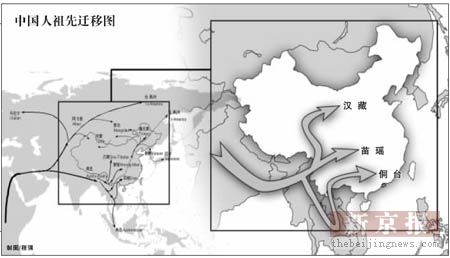 Li Hui commented that one branch of the early Asians, over 10,000 years ago, entered China's southeastern coastline with genetic marker M119. Li Hui, claiming the same ancestry as the Dai-zu and Shui-zu minorities of Southwestern China, firmly believed that his ancestors had dwelled in the Hangzhou Bay and the Yangtze Delta for 7-8 thousand years.
The people with the M119 marker would be the historical "Hundred Yue People".
The interesting theory adopted by Li Hui would be the migration of one branch of people who continued to travel non-stop along the Chinese coastline to reach the Liao-he River area of today's Manchuria.
Li Hui's speculation on basis of the DNA technology was an evolving process.
This would be likely the O2-haplogroup people, rather than the C-haplogroup or North Asia people whose historical presence in Asia could be dated 50,000 years ago, just after the earlier D-haplogroup people who were now mostly restricted in the area of Hokkaido, Japan, and known as the Ainu.
The C-haplogroup people developed into what this webmaster called by the Altaic-speaking people,
i.e., ancestors of the Mongols and Manchus.
What likely happened was that the O2-haplogroup people first travelled along the coast to reach Manchuria, and then traced back towards the south to reach the Yangtze area about 7-8000 years ago, where they evicted the O1-haplogroup people to the Southeast Asian islands.
At about the same time, the O3-haplogroup people, moving through the continent, reached today's western Liaoning at least 5000 years ago, or like 11,000 years ago on basis of the evidence of the pottery aging.
See the genetical analysis conducted by Li Hongjie of Jirin University on the remains of prehistoric people extracted from the archaeological sites.
Li Hui commented that one branch of the early Asians, over 10,000 years ago, entered China's southeastern coastline with genetic marker M119. Li Hui, claiming the same ancestry as the Dai-zu and Shui-zu minorities of Southwestern China, firmly believed that his ancestors had dwelled in the Hangzhou Bay and the Yangtze Delta for 7-8 thousand years.
The people with the M119 marker would be the historical "Hundred Yue People".
The interesting theory adopted by Li Hui would be the migration of one branch of people who continued to travel non-stop along the Chinese coastline to reach the Liao-he River area of today's Manchuria.
Li Hui's speculation on basis of the DNA technology was an evolving process.
This would be likely the O2-haplogroup people, rather than the C-haplogroup or North Asia people whose historical presence in Asia could be dated 50,000 years ago, just after the earlier D-haplogroup people who were now mostly restricted in the area of Hokkaido, Japan, and known as the Ainu.
The C-haplogroup people developed into what this webmaster called by the Altaic-speaking people,
i.e., ancestors of the Mongols and Manchus.
What likely happened was that the O2-haplogroup people first travelled along the coast to reach Manchuria, and then traced back towards the south to reach the Yangtze area about 7-8000 years ago, where they evicted the O1-haplogroup people to the Southeast Asian islands.
At about the same time, the O3-haplogroup people, moving through the continent, reached today's western Liaoning at least 5000 years ago, or like 11,000 years ago on basis of the evidence of the pottery aging.
See the genetical analysis conducted by Li Hongjie of Jirin University on the remains of prehistoric people extracted from the archaeological sites.
Northeast (southeastern Inner Mongolia)
Niuheliang, Lingyuan, the Hongshan Culture, 5000 YBP,
4 N, 1 C*, 1 O
North
Yuxian County (the Sanguan site), Hebei,
the Lower Xiajiadian Culture, 3400-3800 YBP, all O3
Combining Li Hui's study with the pottery excavation, we could see a clear path going north extending from around 15,000 years ago to 10,000 years ago.
Refer to Yaroslav V. Kuzmin's discourse on potteries
to see the path of migration of
proto-Mongoloids
from southwestern China (approx. 15,120+/-500 BP) to
Northeast Asia (Manchuria [13,000 BP, or c. 14,000 - 13,600 cal BC] and
Japan [c. 11,800-10,500 cal BC (c. 13,800 - 12,500 cal BP)]) to
Siberia (11,000 BP, or 11,200 - 10,900 cal BC).
In the timeframe of about 10,000 years, developing a genetic mutation to the marker M134, one branch of people who went direct north, per Li Hui, would penetrate the snowy Hengduan Mountains of the Tibetan-Qinghai Plateau to arrive at the area next to the Yellow River bends.
Owning to the cold weather environment, some physique, such as big noses, heavy lips and longer faces, developed among this group of people, i.e., ancestors of the Sino-Tibetans.
Splitting out of the northbound migrants would be those who went to the east with a new genetic marker M117, i.e., ancestors of the modern Han [a misnomer as the proper term should be Sino-Tibetan, nor the later Sinitic] Chinese.
We could say that our Sino-Tibetan ancestors forgot that they had penetrated northward the Hengduan Mountains from the Indo-China "CORRIDOR" in today's Burma-Vietnam.
"Walking down Mt Kunlun", i.e., the "collective memory of the ethnic Han Chinese" throughout China and the Southeast Asian Chinese communities, that was echoed in Guo Xiaochuan's philharmonic-agitated epic, would become the starting point of the eastward migration which our Chinese ancestors remembered.
(Li Hui grouped the 3000-year-old Chu and Qi people in the same category as the Han Chinese, albeit meeting the ancient classics' records as to the Qi statelet's lineage from the Qiangic-Tibetan Fiery Lord.
According to
https://onlinelibrary.wiley.com/doi/full/10.1111/j.1759-6831.2012.00244.x
"the frequencies of the three main subhaplogroups of O3-M122: O3a1c-002611, O3a2c1*-M134, and O3a2c1a-M117 in Han Chinese are 16.9%, 11.4%, and 16.3%, respectively (Yan et al., 2011).
The northward migration of haplogroup O3a1c-002611 started about 13 thousand years ago (KYA). The expansions of subclades F11 and F238 in ancient Han Chinese began about 5 and 7 KYA immediately after the separation between the ancestors of the Han Chinese and Tibeto-Burman.
Haplogroup O3a1c-002611 and O3a1c1-F11 started their northward migration about 12 KYA from Southeast Asia, along with other O3-M122 lineages, and reached the upper and middle Yellow River basin. About 7 KYA, haplogroup O3a1c2-F238 originated in the ancestors of modern Sino-Tibetan populations. About 6 KYA, the Han Chinese split from the Proto-Sino-Tibetan, and started their migration to the east and south (Su et al., 2000b). About 5 KYA, haplogroup O3a1c1-F11 experienced rapid expansion, probably in the Eastern Han Chinese, with recent gene flow with surrounding populations and eventually became prevalent in different ethnic groups in East Asia.)
Li Hui then pointed out that the ancient Wu people, with M7 genetic marker, came to the lower Yangtze area about 3000 years ago.
While Li Hui claimed that the M7 Wu people had split away from the northbound M134 Sino-Tibetan people, the historical Chinese classics pointed out that the Wu Statelet was established by two uncles of Zhou Dynasty King Wenwang, i.e., migrants from the Yellow River area.
The general layout by Lu Hui seems to have corroborated with Scholar Luo Xianglin's claim that early Sino-Tibetan people originated from the Mt Minshan and upper-stream River Min-jiang areas of today's Sichuan-Gansu provincial borderline and then split into two groups, with one going north to reach the Wei-shui River and upperstream Han-shui River of Shenxi Province and then eastward to Shanxi Province by crossing the Yellow River.
--Though, this webmaster's analysis of China's prehistory shows that the Sino-Tibetan people who moved to the eastern coast was one group, with the future Tibetans being actually the exiles to Northwest China from eastern and central China during the era of Lord Shun. Namely, the split of the Sinitic and proto-Tibetan people occurred prior and during the exile in the late 3rd millennium B.C.E.
(George Driem proposed that the Sino-Tibetans had splitoffs like the Western Tibeto-Burmans and the Eastern Tibeto-Burmans, with the Eastern Tibeto-Burmans forming two groups of northern and southern, who in turn split into the Northwestern Tibeto-Burmans, the Northeastern Tibeto-Burmans, the Southwestern Tibeto-Burmans, and the Southeastern Tibeto-Burmans, with a claim that the western offshoots went all the way to the Kashmir before returning east along the northern slope of the Himalayas to have a reunion with their cousins and that the Northeastern Tibeto-Burmans were the Sinitic people.)
What Li Hui did not touch on in his earliest studies were the cousin tribes of the Sino-Tibetans, namely, the Hmong-miens and Mon-khmers.
As noted at http://www.ncbi.nlm.nih.gov/pmc/articles/PMC3164178/, "A clear hierarchical structure (annual ring shape) emerged in the network of O3a3b-M7 (Fig. 2B), in which MK (Mon-Khmers) haplotypes lay at the center of the network (immediately next to the origin), HM (Hmong-Mien) haplotypes were distributed at the periphery to the MK haplotypes, and the ST (here the subfamily Tibeto-Burman) haplotypes were only found further away from the origin."
|
|
* In Commemoration of China's Fall under the Alien Conquests in A.D. 1279,
A.D. 1644 & A.D. 1949 *
 U.S.S.R./Comintern Alliance with the KMT & CCP (1923-1927)
U.S.S.R./Comintern Alliance with the KMT & CCP (1923-1927)
 Korean/Chinese Communists & the 1931 Japanese Invasion of Manchuria Korean/Chinese Communists & the 1931 Japanese Invasion of Manchuria
American Involvement in China: Soviet Operation Snow, IPR Conspiracy, Dixie Mission, Stilwell
Incident, O.S.S. Scheme, Coalition Government Crap, Amerasia Case & The China White Paper
* Stay tuned for "Republican China 1911-1955: A Complete Untold History" *
|
|
Zou Rong's Revolutionary Army;
Shin Kyu Sik's
Shrine (Spirit, Kunitama) of Korea
|
This snippet is for sons and daughters of China:
Heed the sons & ministers' agony and sorrow of our ancestors who died or lived through the Mongol, Manchu and Soviet-Chicom conquest
and
the Yongjia, Jingkang and Jiashen cataclysms !
Jeanne d'Arc of China:
Teenager girl Xun Guan breaking out of the Wancheng city to borrow the relief troops in the late Western Jinn dynasty;
Liu-Shao-shi riding into the barbarian army to rescue her husband in the late Western Jinn dynasty;
teenager girl Shen Yunying breaking into Zhang Xianzhong's rebels on the horseback to avenge on father's death in the late Ming dynasty.
China's Solitary and Lone Heroes:
Nan Jiyun breaking out of the Suiyang siege and charging back into the city in the Tang dynasty;
Zhang Gui & Zhang Shun Brothers breaking through the Mongol siege of Xiangyang in the Southern Soong dynasty;
Liu Tiejun breaking through three communist field armies' siege of Kaifeng in the Republican China time period;
Zhang Jian's lone confrontation against the communist army during the June 3rd & 4th Massacre of 1989.
|
|
|
In the ancient Chinese records, the name of Choson (Chao-xian) had appeared in almost all dynastic chronicles. There are two mythical books that are worthy of special attention: Shan Hai Jing (The Legends of Mountains & Seas) and Huai Nan Zi (The Book by King Huai-nan of the Han Dynasty). Shan Hai Jing, also termed The Book or Classics of Mountains and Seas, recorded most of the myths and legends of ancient China, a book purportedly said to have been authored by Lord Yu (r. BC 2204-2195 ?) and assistant Bo-yi. Korea or Choson, as a springboard for accessing Sakhalin, the Bering Straits, the Aleutian Islands and Japan, land and sea, was usually first mentioned.
Huai Nan Zi, a book that was contemporary of Han Emperor Wudi's campaign against the Korean peninsula, discussed ancient Korea from the perspective of divination and Shang Aetheling Ji-zi's conferral of the land of Korea.
Chaoxian (Korea) as Recorded in the Book or Classics of Mountains and Seas
1) Chaoxian (Korea) was to the east of Lieyang
Specifically, Shan Hai Jing, with a possibly corroborated history of the 4th century B.C.E. by annotator Shi-zi (i.e., teacher of Qin reformer Shang Yang),
stated in the section on the "Eastern Records in the Immediate Seas (Chapter 13)" (hei nei dong jing) that
Chaoxian (Korea) was to the east of Lie-yang
when talking about the geography of "north of the [Bohai] Sea" and "south of the mountain".
(Note that the "seas" component of Shan Hai Jing could be relatively new in comparison with the "mountain" part of Shan Hai Jing. Hence, the writings on Chaoxian (Korea) in Shan Hai Jing could be after-the-matter-of-known-facts.)
Gu Mingxue proposed that "lie-yang" meant the northern bank of the Lie-shui River while the river was speculated to be
the Jeanyeong or Zaining-jiang River of Korea. (The soundex word "lie" was used to denote the three rivers of Korea, while the same character had appeared in a different record in Han Dynasty to point to a Lie-kou rivermouth, i.e.,
the estuary of
both the Deadong (Datong-jiang) River and the Jeanyeong River, where one of Han Dynasty Wudi's two-prong attack force against Korea had converged upon.)
Gu's point was that
when Shan Hai Jing was referring to Chaoxian (Korea) as located to the east of the Yan Principality of Zhou Dynasty and to the east of Lie-yang, it was after the matter of the fact that
the Yan Principality army had invaded and defeated Ji-zi Chaoxian (Korea), to the effect that Ji-zi Chaoxian
was said by Shan Hai Jing to be subject to Yan.
This webmaster's reservation is that when the ancient people wrote down "lie-yang-dong", it could not mean two adjectives to point to the east of the northern bank of "lie" but the east of a place called "lieyang".
-- The above extrapolation by Gu Mingxue on the "Lie-yang" as to the boundary record of Yan in Shan Hai Jing would furthermore invalidate the age of the said book as it could mean that the said book could not have been written earlier than the 4th to 3rd centuries B.C.E, when
Yan Principality General Qin Kai attacked Donghu (eastern Hu) and Ji-zi Chaoxian consecutively around 300 B.C.E.
2) Chaoxian (Korea) was at Lieyang
Alternatively, someone called Wang Li attempted to explain where Ming-yi (bright Yi) of the Nine Yi people lived or where Ji-zi [who departed for Ming-yi's land at the end of Shang Dynasty] was. Wang Li used comma to separate the characters "lie-yang" and "dong" - as suggested by Zhang Boquan -- to state that
Shan Hai Jing meant Ji-zi Chaoxian to be located right at Lieyang, followed by words of the east sea and south of the northern mountain in lieu of the popular explanation which was "east of Lieyang, north of the sea and south of the mountain".
Further, Wang Li claimed that Lieyang is the ancient Liang-shui River and today's Taizi-he River in Benxi County, east of Shenyang (Mukden).
More, Wang Li cited Zhang Hua's Bo Wu Zhi (Records of the extensive list of things) to state that Ji-zi Chaoxian was actually located in today's Liaodong peninsula, where the Yan Principality attacked, uprooting Ji-zi Chaoxian and forcing them into fleeing to the Korean peninsula. Zhang Hua (232-300 AD)'s statement was that after Yan attacked and destroyed Chao-xian, the Ji family people escaped into the sea to reach [the] Korean [peninsula] where they became the mentor of the "[Chao]Xian-guo" nation.
--This means that Ji-zi Chaoxian was not situated in the Korean peninsula or Wang-xian-cheng (today's Pyongyang) at the beginning [or the 11th century B.C.E.] but after Yan defeated them at Lieyang around 300 B.C.E.
More confusing was the viewpoint that what Zhang Hua meant by "going into the sea" was what the Korean kings and emperors did for the last thousand years, namely, escaping onto the Jiang-hua Island off the coast in crises.
Other than the above dispute, the rest of history was much clearer in stating
that
the ancient Koreans under the Ji-zi family would not retake today's northwestern Korea and the
Liaodong (eastern Liaoning) peninsula territory till the Qin Empire decimated the Zhou principalities, including Yan, in the unification war of the early 3rd century B.C.E.
What Shan Hai Jing inferred to was that Yan and Chaoxian (Korea), in the 3rd century B.C.E., had demarcation along the Jeanyeong River, with the north side belonging to the former while the latter controlling the east (or southwest) side of the river.
3) Chaoxian (Korea) and "tian du"
Scholar Gu Mingxue further dug up the entry in the "Records of the Immediate Seas (Chapter 18)", which listed Chaoxian (Korea) with "tian [heaven] du [meaning other than the poison denotation in Chinese character itself]", and speculated that the second part "tian du" could not be the later denotation of "shen du" or "yin du" [Indus] for India but a transliteration of the later more clearly pronounced words of "xian [precarious pass] du [meaning the gorge denotation in Chinese character itself]", a county among 18 counties of the Liaodong commandery recorded in Ban Gu's geography section of Han Shu --which would be what the ancient Koreans called Pyongyang by "wang [king's] Xian [precarious pass] cheng [fort]", namely, Wang'gom-song.
The point here is significant in that Wang'gom-song would be the source of the later 13th century A.D. Korean forgery for the legendary overlord of Tan-gun (lord of the rosewood tree) Wang [king] Jian.
The Koreans pretentiously claimed that China's history WEI SHU, a book absent such an entry, talked about Tan-gun establishing the capital at "A-si-da", a multi-syllable word of the 13th century contemporary Korea, albeit leaving out the details about the exact Wei Shu they were referring to.
Kim Il Sung, who ordered to have Ji-zi's clothes-cap tomb [which could be built in A.D. 1102] dug up and destroyed in 1959, had a Tan-gun tomb built in 1993-1994, on basis of the 1932-1936 tomb.
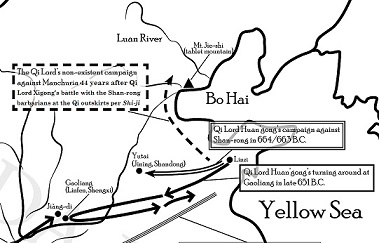 The "Records of the Immediate Seas (Chapter 18)" stated that Chaoxian (Korea) was within the East Seas and located at a corner of the North [Bohai] Sea.
Numerous other books, such as Guan Zi, Shang-shu Da Zhuan, which also extensively discussed the name of Chaoxian (Korea), could be later 'good-intentioned' forgeries as we discussed in the prehistory section.
The next record would be Sima Qian's Shi-ji, which was contemporary of Han Emperor Wudi's invasion of Korea.
Though, historian Sima Qian could have wrongly assumed that the same group of the barbarians as existed in Han Emperor Wudi's times could be the same as those who appeared in the Chinese records 600-700 years earlier.
(Guan Zi, in the Xiao kuang section, claimed that Qi Lord Huan'gong purportedly in the mid-7th century B.C. campaigned against Gu-zhu, Shan-rong, and Hui-he (i.e., dirty raccoon), with Hui-he being equivalent to the Fu-yu people who were ancestors of Koguryo, Paekche and the Yamato Japanese. That is, Guan Zi was very much a Han dynasty book carrying the latter-known names of the barbarians.
The sensational northern campaign by Qi Lord Huan'gong could never have happened, nor the sensational southern invasion of the Shandong peninsula by the Mountain Rong barbarians 55 years after the Zhou dynasty's relocation of the capital city to Luoyang.
Lu Lord Huan'gong, in 710 B.C., visited the Tang-di (Yutai, Shandong) place to have a summit with the Rong barbarians who could be the later so-called Bei-rong or Northern Rong barbarians, namely, some group of the barbarians whom Sima Qian, 600-700 years later, extrapolated to mean the Guzhu, Lingzhi and Hui-he barbarians in today's southern Manchuria.)
The "Records of the Immediate Seas (Chapter 18)" stated that Chaoxian (Korea) was within the East Seas and located at a corner of the North [Bohai] Sea.
Numerous other books, such as Guan Zi, Shang-shu Da Zhuan, which also extensively discussed the name of Chaoxian (Korea), could be later 'good-intentioned' forgeries as we discussed in the prehistory section.
The next record would be Sima Qian's Shi-ji, which was contemporary of Han Emperor Wudi's invasion of Korea.
Though, historian Sima Qian could have wrongly assumed that the same group of the barbarians as existed in Han Emperor Wudi's times could be the same as those who appeared in the Chinese records 600-700 years earlier.
(Guan Zi, in the Xiao kuang section, claimed that Qi Lord Huan'gong purportedly in the mid-7th century B.C. campaigned against Gu-zhu, Shan-rong, and Hui-he (i.e., dirty raccoon), with Hui-he being equivalent to the Fu-yu people who were ancestors of Koguryo, Paekche and the Yamato Japanese. That is, Guan Zi was very much a Han dynasty book carrying the latter-known names of the barbarians.
The sensational northern campaign by Qi Lord Huan'gong could never have happened, nor the sensational southern invasion of the Shandong peninsula by the Mountain Rong barbarians 55 years after the Zhou dynasty's relocation of the capital city to Luoyang.
Lu Lord Huan'gong, in 710 B.C., visited the Tang-di (Yutai, Shandong) place to have a summit with the Rong barbarians who could be the later so-called Bei-rong or Northern Rong barbarians, namely, some group of the barbarians whom Sima Qian, 600-700 years later, extrapolated to mean the Guzhu, Lingzhi and Hui-he barbarians in today's southern Manchuria.)
There were three major components to Shan Hai Jing, namely,
"The Book on the Mountains", "The Book on the [Inner-] Seas & the Book on the [Over-]Seas" and "The Book on the [Overseas] Wilderness", with the section on mountains covering the viscera
of Mother Earth as known in the Central Kingdom of China in the 4th century B.C.E. at minimum, the section on the [Inner-]Seas and [Over-]Seas to have credible geography on the Korea peninsula while the rest being
difficult to pinpoint in an exact match,
and the section on the [Overseas] Wilderness, such as the speculated description of the American continents, being fuzzy and incredulous.
Other than Shan Hai Jing (i.e., written no earlier than the 4th century B.C.E. and most likely the timeframe of the early Han dynasty time period), there was Zhan Guo Ce, a book that Liu Xiang, during Han Dynasty Emperor Chengdi's reign, compiled on basis of the remnant records of the Warring States time period, in which Su Qin, a strategician (strategist) working on behalf of Yan Principality to build alliance among various statelets against the Qin hegemony during the 4th-3rd centuries B.C.E., had discourse on the countries
to the east of Yan, listed as i) Chaoxian (Korea) and ii) Liaodong (east of Liao-he River or the Liaoning peninsula), i.e., two separate statelets.
This (Zhan Guo Ce) could mean that Yan had basically rezoned the newly-acquired territory of ancient Korea, up to the northern bank of the Jeanyeong River as 'Liaodong'. (See below description of the Yan-Donghu war to see how the Dong-hu barbarians pushed south to have apparently wedged between Yan and Chaoxian or Ji-zi Korea, and how Yan General Qin Kai defeated the Dong-hu and subsequently defeated Ji-zi Korea.)
More about Shan Hai Jing (The Legends of Mountains & Seas) is available at http://www.imperialchina.org/ImperialChina/?p=331
Chaoxian (Korea) as Recorded in THE BOOK OF CHANGES
Not to leave out anything, the earliest Chinese book that referred to the land of Korea could be Zhou Yi, i.e., Zhou King Wenwang's 'milfoil divination' (YI JING, The Book of Changes), a divinity development that the Zhou Dynasty founder contrived by developing on top of the ancient '8 Gua' into '64 Gua'.
In The Book of Changes, the clear reference was the conferral of the land of Korea onto Shang Dynasty Prince Ji-zi, with the words stating that Ji-zi was in the land of 'Ming-yi', i.e., the brightness Yi people --which could be the 'Yang-yi' or the Sun yi living along the Shandong coast during the 3rd millennium B.C.E., one of the Nine Yi people, with nine meaning nothing other than numerous in Chinese,
similar to the Yuezhi's nine Zhaowu clans in central Asia or the Nine Name Hu Clans.
Though, scholar Liu Yuwen had a brilliant re-analysis of the geography concerning the earliest record about Chaoxian (Korea) in Huai Nan Zi (The Book by King Huai-nan of Han Dynasty), and combining the extensive records in Shan Hai Jing (The Book or Classics of Mountains and Seas), concluded that the locality of 'Ming-yi', i.e., the brightness Yi people, was in fact right in the heart of the Shandong peninsula.
This could only mean that Shang Dynasty Prince Ji-zi, moving east towards the coast, had initially dwelled in the Yang-yi (Sun Yi) country, i.e., today's Yishui-Juxian area and what the Han Dynasty denoted as the Ji-xian County [i.e., Ji-zi's county], before a further move across the Yellow Sea to today's Pyongyang area of Korea or more likely across the Bohai Inner Sea to southern Manchuria. --This makes sense in that the cross-sea trip to Manchuria or Korea was one fourth of the total detour length if moving along the coast, while the Bohai Sea and the Yellow Sea in this webmaster's opinion were just like the Chesapeake Bay in James A. Michener's novel.
See below description on Sushen-shi (Manchuria), Guzhu (Liaoning) & Shan-rong (Hebei-Liaoning) to understand that the land trip was an unlikely feat versus an easy sea trip to southern Manchuria or to the Deadong (Datong-jiang) River and the Jeanyeong River on the northwestern Korea coast.
Chaoxian (Korea) as Recorded in the Book by King Huai-nan of Han Dynasty
Huai Nan Zi (The Book by King Huai-nan of Han Dynasty) stated that departing Jie-shi-shan (wrongly said to be the Wu2di4 county of today's northwestern Shandong by Liu Yuwen), the easternmost [Sinitic] territory could be reached by taking the route of
Jie-shi-shan,
Chaoxian (morning freshness, i.e., the same name for Ji-zi Korea), and
Daren-guo (i.e., the tall men's country).
Huai Nan Zi, which was compiled by thousand scholars under King Huai-nan [179-122 B.C.E.] in today's Yangtze-Huai territory, had more than adopted the writings of Shan Hai Jing [which had the possibly 4th century B.C.E. contents], in that it had the same copiousness and comprehensiveness of Lv-shi Chun-qiu (Lv Buwei's Annals on the Springs & Autumns) which in turn had repeated the geography recitals of Shan Hai Jing.
The illustration here, however, was to point out that the original Ji-zi Chaoxian (Korea) could be very well located on the Shandong peninsula, and with the ongoing hundreds of years of wars between the Zhou Dynasty and the [misnomer] Dong-yi people, Ji-zi Chaoxian (Korea) might have already crossed the Yellow Sea to the Korea peninsula or the Bohai Sea to Manchuria, the actual incident of which was of course not recorded in the Chinese history.
--Why so?
Yu Gong (Lord Yu's Tributes) might have corroborated Huai Nan Zi in pinpointing the easternmost Sinitic world to be today's Liaodong Peninsula --when Yu Gong implied that the ancient Dao-yi people came from possibly today's Liaodong Peninsula by sea, using the Jie-shi mountain around today's Mountain and Sea Pass as the beacon tower equivalent, and sailed into the ancient Yellow River for surrendering the tributes.
Yu Gong was more precise in making the distinction among the Yi people, listing the Dao-yi (island Yi) in the ancient Ji-zhou prefecture, the Yu-yi [sea corner Yi] and Lai-yi [the Laizhou prefecture Yi] in the ancient Qing-zhou prefecture, the Huai-yi [the Huai-shui River Yi] in the ancient Xu-zhou prefecture, the Niao-yi -bird totem Yi] in the ancient Yang-zhou prefecture, plus the He-yi in the ancient Liang-zhou prefecture of northwestern China.
(Note that the ancient book Yu Gong made a difference between the Dao-yi and Niao-yi while the two characters later corrupted into each other to mean the wrong Yi group, i.e., the island Yi in today's southeastern Manchuria being swapped to be the bird totem Yi in the Yangtze River area.
As to the Jieshi locality, Cao Cao, returning from his 206 A.D. triumphant campaign in today's southern Manchuria, came to Mount Jieshi, i.e., the ancient landmark for the seafarers to enter the Yellow River river course, wrote a famous poem Guan Cang Hai (observing the expanse of the seas), stating that the sun and moon traveled in the seas as if having their home there and that the starry Milky Way shined on the seas as if having their home there: 'ri-yue zhi xing, ruo chu qi zhong; xing-han can-lan, ruo chu qu li'.)
What was validated by Liu Yuwen, however, would be the geography that was more remotely ancient than Yu Gong - which implied some fancy land beyond the [Bo-hai] seas.
Huai Nan Zi correctly pinpointed the original easternmost Chinese territory as the Shandong coast, not the fancy land beyond the seas, and named the known places in today's Shandong as the place where the sun rose, the land of Fu-mu tree (i.e., the later Fu-sang tree), the countryside of the Qing-tu (green earth) and forests, and the domain of ancient overlords and saints Tai-hao and Xia Dynasty king Mang.
Liu Yuwen used Shan Hai Jing to prove Daren-guo (i.e., the tall men's country) to be Fu-fu or Kua-fu;
Liu Yuwen used the Lord Yao section of Shang-shu (The Remotely Ancient History) to prove the name of the easternmost place to be Yang-gu (i.e., Sun valley), or the place of the Yu-yi people,
and then used the Yu Gong (Lord Yu's Tributes) of Shang-shu (The Remotely Ancient History) to prove that Qingzhou (i.e., Qing-tu) was the same place as Yu-yi and Yang-gu.
Liu Yuwen used Lv-shi Chun-qiu (Lv Buwei's Annals on the Springs & Autumns) to prove that Fu-mu was the same as Qing-qiang or Qing-qiu (green hill), and Liu Yuwen used Sima Qian's Shi-ji to show that the same easternmost place was named Pan-mu.
Liu Yuwen used the miscellaneous geography books, prefecture and county records and the historians' records to first pinpoint the ancient "Qian-shen" (thousand horses) county as the locality of Qing-qiu, where Qi Lord Jinggong grazed the horses, and
then cited the ancient interpretation of Qing-tu as what Yu Gong (Lord Yu's Tributes) meant by Qingzhou
and
what the history invariably designated as the place of Qingzhou.
Liu Yuwen used Shan Hai Jing to prove Chao-yang (facing the Sun) Valley was to the immediate south of Qing-qiu, while Chao-yang (facing the Sun) Valley was the same as Yang-gu.
The conclusion reached by Liu Yuwen was that what Huai Nan Zi referred to was in fact "Chao-yang" (i.e., facing the Sun) by what it termed Chao-xian.
Liu further extrapolated it to be what history referred to as the high "Chao-wu" (dancing in the morning) mountain near Chefoo and/or near Chengshan,
where the ancient people adored the rising Sun god --which then conflicted with the south-north geography of "Chao-yang" and "Qing-qiu"
as the sun-watching mountains would be at the easternmost tips of the peninsula --the locality to the east where the sun rose,
the land of Fu-mu tree (i.e., the later Fu-sang tree), the countryside of the Qing-tu (green earth) and forests etc.
Note Huai Nan Zi wrote down the [misnomer] Chaoxian land to be between Jie-shi-shan and Daren-guo. Daren-guo, i.e., the tall men's country, was historically taken as the later Yexian County or today's Laizhou.
Liu Yuwen further disputed what Shan Hai Jing meant by Ji-zi Korea being located at the corner of the North [Bohai] Sea to state that it could be some lagoon sea (?how many years ago) that no longer existed --which was in this webmaster's opinion going beyond the correct interpretation of Huai Nan Zi to refute the established facts about Ji-zi Korea from the 4th century B.C.E.
In another word, Shan Hai Jing, when talking about Ji-zi Korea in the 4th century B.C.E., had incorporated the facts about Ji-zi Chaoxian which existed actually in the Korean peninsula,
while Huai Nan Zi, in the 2nd century B.C.E., was possibly using the ancient records about Chao-xian's initial existence on the Shandong peninsula from beyond the 4th century B.C.E.
The lagoon sea theory, however, fully corroborated Shan Hai Jing's account as to the Daren-guo situated within the seas --if we are talking about some geographical change beyond the stone age.
We want to put forward a caution here.
All in all, the ancient people or the ancient country did not live in a static status but on the move.
Hence, the geography and the ordinates could not be fixed as time flied.
No matter how the Shang Dynasty exodus took place to reach Korea, Shang Prince Ji-zi of the 11th century B.C.E., the 'Ming-yi' and the Chaoxian (Korea) designation of the 4th century B.C.E., apparently all belonged to the Sinitic family, as all available ancient Korean words as recorded in the book Fang Yan (i.e., Dialects) by Western Han Dynasty minister Yang Xiong, all appeared to be one syllable characters, none like multiple syllables as today's Tungusic or Korean languages are. (The names of ministers for King Wei Youqu, as expounded below, however, appeared to be multiple syllables should we discount the first character 'xiang' as the surname.
See below for the detailed discussion on the misnomer Dong-yi [Eastern Yi] and the Tungunsic invasion of Korea to overpower the continental traits below.
Also refer to
Sima Yi's exterminating the Gongsun Family who ruled southern Manchuria and northern and central Koreas for almost half a century and in A.D. 238 deporting 40,000 households of Sinitic Chinese or over 300,000 people back to North China from Manchuria, yielding the area to the [C-haplogroup] Tungunsic and/or [non-Tungusic and O2-haplogroup] Fuyu people.)
|
|
|
|
|
|
|
Sovereigns & Thearchs;
Xia-Shang-Zhou dynasties;
Zhou dynasty's vassalage lords;
Lu Principality lords;
Han dynasty's reign years
(Sexagenary year conversion table-2698B.C.-A.D.2018; 247B.C.-A.D.85)
|
|
The Sinitic Civilization - Book I is
available now at
iUniverse,
Barnes & Noble,
Amazon,
Google Play|Books
and
Nook.
The Sinitic Civilization - Book II is available at
iUniverse,
Amazon and Barnes & Noble.
Check out the 2nd edition preface that had an overview of the epact adjustment of the quarter remainder calendars of the Qin and Han dynasties, and the 3rd edition introductory that had an overview of Sinitic China's divinatory history of 8000 years.
The 2nd edition, which realigned the Han dynasty's reign years strictly observing the Zhuanxu-li calendar of October of a prior lunar year to September of the following lunar year, also cleared this webmaster's blind spot on the authenticity of the Qinghua University's Xi Nian bamboo slips as far as Zhou King Xiewang's 21 years of co-existence with Zhou King Pingwang was concerned, a handicap due to sticking to Wang Guowei's Gu Ben Bamboo Annals and ignoring the records in Kong Yingda's Zheng Yi.
Stayed tuned for Book III that is to cover the years of A.D. 86-1279, i.e., the Mongol conquest of China, that caused a loss of 80% of China's population and broke the Sinitic nation's spine.
Preview of annalistic histories of the Sui and Tang dynasties, the
Five Dynasties, and the two Soong dynasties
could be seen in
From the Khitans to the Jurchens & Mongols: A History of Barbarians in Triangle Wars and Quartet Conflicts
(The Barbarians' Tetralogy - Book III: available at iUniverse;
Google;
Amazon;
B&N).
(A final update of the civilization series, that is scheduled for October 2022, would put back the table of the Lu Principality ruling lords' reign years, that was inadvertently dropped from Book I during the 2nd update.)
|
|
Book II - Table of Contents:
Chapter XXXI: The Han Dynasty's Chronological History p.367
Invasion into the Korean Peninsula p.391
Chapter XXXVI: The Western Expedition, The Kunlun Mountain & Shan Hai Jing p.489
Han Emperor Wudi Seeking Elixir from the Immortals on the Kunlun Mountain p.491
Credible Geography Book on the Mountains Possibly Expanded to Include the Legendary Kunlun Mountain p.493
Unearthly Things in the Mountains' Component of The Legends of Mountains & Seas p.501
The Divination Nature and Age of the Seas' Component of The Legends of Mountains & Seas p.506
Chapter XXXVII: The Legends of Mountains & Seas (Shan Hai Jing) & The Ancient Divination p.520
The Divination Nature and Age of the Seas' Component in The Legends of Mountains & Seas - Debunking the Theory of "Asiatic Fathers of America"
Shan Hai Jing, in the "within-seas" and "great [overseas] wilderness sections, contained three interesting matters, namely, an alternative history of the thearchs that differed from the five thearchs' lineage in Shi-ji and Da-dai Li-ji; the wind gods that had the trace from the oracle bones of the Shang dynasty time period; and the divination topics such as Xia King Qi3's bestriding the flying dragons to rise to the heaven.
It could be speculated that the mythic writings in the seas' components of Shan Hai Jing were the result of the emperor's seeking the panacea or elixir. Note that dozens of diplomatic missions were sent to the west, with an apparent side order for ascertaining the locality of the legendary Kunlun Mountain where the immortals lived. If the mountain sections of Shan Hai Jing was written before Zhang Qian's trip to the west, the writer(s) of the sea sections, possibly following the "mountains" component of Shan Hai Jing (i.e., The Legends of the Mountains and Seas), expanded the writings on Kunlun, the Queen Mother (old woman), and the origin of the Yellow River, etc., into the chapters known as "The Book on the Within-Seas", "The Book on the Inner Seas", "The Book on the Outer Seas", and "The Book on the [Overseas] Wilderness" --a highly speculative book that talked about the panacea, the immortals, the various gods, as well as the ancestral human gods like Tai-hao the Senior (i.e., wind or phoenix-surnamed ancestor), Huang-di the Yellow Thearch, Yan-di the Fiery Thearch, Shao-hao the Junior (i.e., Ji3-surnamed ancestor), Overlord Zhuanxu, Overlord Di-ku, Overlord Yao, Overlord Shun, the founder-kings of the Xia, Shang and Zhou dynasties, as well as mythical figures like Lord Di-jun, et al. (Depending on the coverage of the overlords in different sections of the sea components of Shan Hai Jing, there were unfounded claims among the modern historians that those particular sections of the book were from some particular past dynasties like Xia or Shang.)
The mountain part of Shan Hai Jing, while having its geographical layout built on top of Yu Gong (Lord Yu's Tributes), was not written as a geography book but with possibly two purposes, namely, a proclivity for expounding sacrifice and primitive prophecy conducted on the mountains and hills, and a description of the treasures and wealth of the mountains. The second purpose was similar to the forgery Han dynasty political economy book Guan Zi --which, like the "Salt & Iron Debate" of the Han dynasty, contained chapters on the mountains such as 'Shan-guo Gui' (mountain nations' track, i.e., finance management), Shan Quan Shu (mountain's whimsical mathematical strategy), and Shan Zhi Shu (mountain's utmost mathematical strategy), containing similar description of the treasures and wealth of the mountains. The writings sharing the common geographical data or similar raw materials with the mountain part of Shan Hai Jing included Qu Yuan's poems like Tian Wen (asking heaven); Mu-tian-zi Zhuan (Zhou King Muwang's travelogue); and Lv-shi Chun-qiu.
(The four eastern mountain ranges were mistakenly appropriated to North America by Henriette Mertz in the 1958 book Pale Ink, which was the author's overzealous pursuit of the topic of Asiatic fathers of the Amerindians. Henriette Mertz also had the wild imagination about the deep gully beyond the east sea, stating that it was the Grand Canyon of Arizona. Henriette Mertz, who had erroneously appropriated the mountains and valleys in Shan Hai Jing to North America, had some validity as to the link of monk Hui-shen to Quetzalcoatl.)
In contrast, the seas or overseas' components of Shan Hai Jing transcribed the unearthly animals, human-faced animal gods and strange-looking people in the mountain part of Shan Hai Jing into the names of countries or tribes as seen in Lv-shi Chun-qiu and Han dynasty book Huai Nan Zi, exhibiting the seas or overseas' components to be later than the mountain part. The seas or overseas' components could be further separated into two groups, namely, the "inner seas" and the "outer seas" sections that were compiled by Liu Xin of the Han dynasty and the "within-seas" and the "overseas wilderness" sections that were collected by Guo Pu of the Jinn dynasty, with the former two sections possibly synchronizing with the Han empire's military expansion, and the latter two sections sharing similar contents seen in the divinatory books Lian-shan Yi and Gui-cang Yi, including the Wangjiatai excavated divination texts of the 3rd century B.C. and possible materials from the Ji-zhong tomb excavation materials that were possibly a few decades earlier than the Wangjiatai texts.
Gui-cang Yi, like what the seas' component of Shan Hai Jing did in extensively copycatting Qu Yuan's and the other Chu Principality poems, had taken some of the poems' concepts as part of the divination texts, such as the "Feng-xue" (wind cave) in poem Bei Hui-feng [feeling sad about the percolating wind], and the "Yun-zhong[-jun]" (god in the cloud) and "Dong-jun" (eastern god) deities in poem Jiu Ge (nine songs), for example. While the divination in the seas or overseas' components of Shan Hai Jing could be relatively old, like the age of the Ji-zhong tomb and Wangjiatai excavation texts, the materials had apparently undergone revision through the Zhou, Qin, Han and Jinn dynasties, for about half millennium's time, as seen in Guo Pu's citation of eight polars in Qi3-shi1 of Gui-cang Yi to describe Xi-he2's reign in the empty mulberry land under the 'cang-cang' blue sky, as well as in the erroneous interpretation of Xia King Qi3's rising to the sky to be a high lord's guest as some theft of heavenly music, not an award from the high lord.
Simply speaking, the seas or overseas' components of Shan Hai Jing, though carrying the names of countries like in today's Korea, Chinese Turkestan and India, etc., were not about geography at all but divination. The divination materials, similar to those in Shi1 Fa, Gui-cang Yi, the Wangjiatai divination script, and the divination in Mu-tian-zi Zhuan, served the same augury purpose of the late Warring States time period, albeit possessing their separate freelance or freewheeling traits.
For example,
The one eyed son of Lord Shaohao in the "great northern wilderness" (Da Huang Bei Jing) section of Shan Hai Jing, like the one-hand and one-eye 'shen-mu-guo' (the deep eye socket) state in the "Northern Outer Seas" section, which was speculated to be the legendary one-eyed state Arimaspi that was described by Herodotus in Histories as located north of Scythia and east of Issedones and linked to the three-eye stone statutes of the Okunev Culture in Minusinsk, could have its source in some one-eye bird in the northern mountain range of Shan Hai Jing, and the one-eye and three-tail 'huan' foxlike animal on Mt. Yiwang-zhi-shan in the western mountain range.
Some conclusive statement could be made about the alternative divination methods other than Zhou Yi (i.e., Yi-jing). No matter Gui-cang Yi, Shi1 Fa, the Wangjiatai divination script, Mu-tian-zi Zhuan, or the mountain part and seas' part of Shan Hai Jing, they served the same augury purpose of the late Warring States time period, that possessed their separate freelance or freewheeling traits in the land of the Wei Principality in the case of the Ji-zhong tomb's type of Gui-cang Yi divination or in the land of the Chu Principality in the case of Shi1 Fa and Wangjiatai divination bamboo slips. The line augury objects in Shi1 Fa under the stalk numbers "eight", "five" and "four", with similarity to the augury topics in Zhou Yi and Gui-cang Yi's four trigram images or diagrams, could be said to be like what was seen as the primitive prophecy in the mountain part of Shan Hai Jing. Roughly, Shi1 Fa matched the primitive prophecy in the mountain part of Shan Hai Jing, while Gui-cang Yi, namely, the Wangjiatai scripts or the Ji-zhong tomb's type of Gui-cang Yi divination, matched the seas' part of Shan Hai Jing as far as divination was concerned.
For details, refer to
THE SINITIC CIVILATION Book II, available on Amazon,
B&N.






Epigraph|Preface|Introduction|T.O.C.|Afterword|Bibliography|References|Index
(available at iUniverse|Google|Amazon|B&N)
|
|
The Misnomer Dong-yi (Eastern Yi) Origin
The Sushen-shi, Guzhu & Shan-rong
Choson (Ji-zi Chaoxian [Korea])
The Three Haan [Han2] Statelets
The Dong-hu: Xianbei & Wuhuan
Fuyu [Puyo (Buyeo)] & Koguryo
The Gongsun Family Exercising Control over Southern Manchuria and Northern Korea
Mo (Huimou, Wimo Or Yemaek)
Fuyu [Puyo (Buyeo)] & Koguryo
Koguryo
Silla
Paekche
Wa Japan & the Ancient Koreans
The Demise of Koguryo
Koryo
The Mongol Invasion Of Japan Via Korea
The Japanese Piracy, Shogunate Tallies, Korea & the Taiwan Island
Imperialist Encroachments On Korea
The 1894 Sino-Japanese War Over Korea
The Korean Restoration Movement & the Interim Korean Government
KOREAN COMMUNISTS & THE JAPANESE INVASION OF MANCHURIA - 1930-1931
[Modified : Saturday, 31-Mar-2012 04:14:16 EDT]
The Koreans' Ethnic Cleansing against the Chinese During the 1931 Wanbaoshan Incident
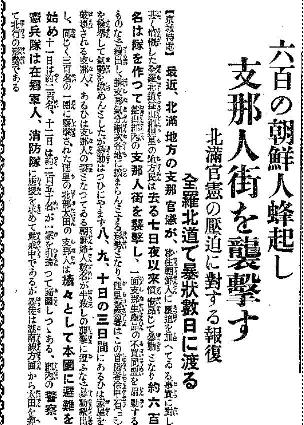
The 1950-1953 Korean War
|
|
|
|
|
|
|
Sovereigns & Thearchs;
Xia-Shang-Zhou dynasties;
Zhou dynasty's vassalage lords;
Lu Principality lords;
Han dynasty's reign years
(Sexagenary year conversion table-2698B.C.-A.D.2018; 247B.C.-A.D.85)
|
|
The Sinitic Civilization - Book I is
available now on
iUniverse,
Barnes & Noble,
Amazon,
Google Play|Books
and
Nook.
The Sinitic Civilization - Book II is
available at
iUniverse,
Amazon and Barnes & Noble.
Check out the 2nd edition preface that realigned the Han dynasty's reign years strictly observing the Zhuanxu-li calendar of October of a prior lunar year to September of the following lunar year, and the 3rd edition introduction that had an overview of Sinitic China's divinatory history of 8000 years.
The 2nd edition preface had an overview of the epact adjustment of the quarter remainder calendars of the Qin and Han dynasties, and the 3rd edition introduction had an overview of Sinitic China's divinatory history of 8000 years.
The 2nd edition realigned the Han dynasty's reign years strictly observing the Zhuanxu-li calendar of October of a prior lunar year to September of the following lunar year.
Stayed tuned for Book III that is to cover the years of A.D. 86-1279, i.e., the Mongol conquest of China, that caused a loss of 80% of China's population and broke the Sinitic nation's spine.
Preview of annalistic histories of the Sui and Tang dynasties, the
Five Dynasties, and the two Soong dynasties
could be seen in
From the Khitans to the Jurchens & Mongols: A History of Barbarians in Triangle Wars and Quartet Conflicts
(The Barbarians' Tetralogy - Book III: available at iUniverse;
Google Play|Books;
Amazon;
B&N).
(A final update of the civilization series is scheduled for October of 2022, that would put back the table of the Lu Principality ruling lords' reign years, that was inadvertently dropped from Book I during the 2nd update.)
|
|
 Now, the Scourge-of-God-Tetralogy.
Book III of
The Barbarian Tetralogy, i.e., this webmaster's barbarism series, is released in October of 2022 by iUniverse. This barbarism series would be divided into four volumes covering the Huns, the Xianbei, the Turks, the Uygurs, the Khitans, the Tanguts, the Jurchens, the Mongols and the Manchus.
Book I of the tetralogy would extract the contents on the Huns from
The Sinitic Civilization-Book II,
which rectified the Han dynasty founder-emperor's war with the Huns on mount Baideng-shan to A.D. 201 in observance of the Qin-Han dynasties' Zhuanxu-li calendar.
Book II of the Tetralogy would cover the Turks and Uygurs.
And
Book IV would be about the Manchu conquest of China.
Now, the Scourge-of-God-Tetralogy.
Book III of
The Barbarian Tetralogy, i.e., this webmaster's barbarism series, is released in October of 2022 by iUniverse. This barbarism series would be divided into four volumes covering the Huns, the Xianbei, the Turks, the Uygurs, the Khitans, the Tanguts, the Jurchens, the Mongols and the Manchus.
Book I of the tetralogy would extract the contents on the Huns from
The Sinitic Civilization-Book II,
which rectified the Han dynasty founder-emperor's war with the Huns on mount Baideng-shan to A.D. 201 in observance of the Qin-Han dynasties' Zhuanxu-li calendar.
Book II of the Tetralogy would cover the Turks and Uygurs.
And
Book IV would be about the Manchu conquest of China.
From the Khitans to the Jurchens & Mongols: A History of Barbarians in Triangle Wars and Quartet Conflicts
, i.e., Book III of
the Scourge-of-God-Tetralogy,
focused on the Khitans, Jurchens and Mongols, with the missing one-year history of the Mongols' Central Asia campaigns rectified.
This webmaster, other than the contribution to the Sinology studies in rectifying the Huns' war to 201 B.C., and realigned the missing one-year history of the Mongol Central Asia war, had one more important accomplishment, i.e., the correction of one year error in the Zhou dynasty's interregnum (841-828 B.C. per Shi-ji/840-827 per Zhang Wenyu) in
The Sinitic Civilization-Book I, a cornerstone of China's dynastic history.
|
The Scourges of God: A Debunked History of the Barbarians (available at iUniverse|Google Play|Google Books|Amazon|B&N)
From the Khitans to the Jurchens & Mongols: A History of Barbarians in Triangle Wars and Quartet Conflicts
(The Barbarians' Tetralogy - Book III)
Epigraph,
Preface,
Introduction,
Table of Contents,
Afterword,
Bibliography,
References,
Index
|
|
Written by Ah Xiang
|
|

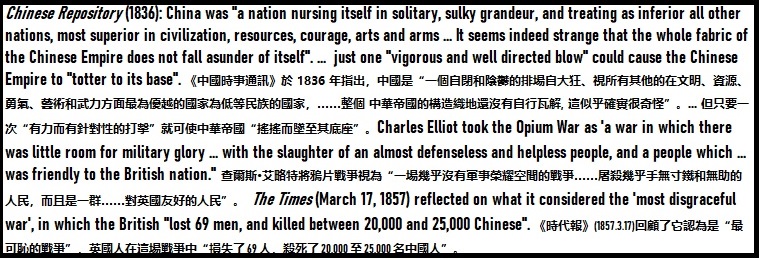
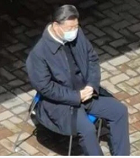








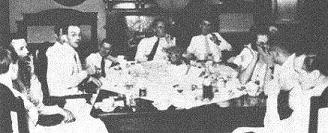
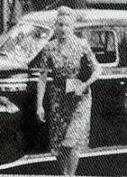
![Though, Anna Wang [Anneliese Martens], in her memoirs, expressed jealousy over Gong Peng by stating that the Anglo-American reporters had flattered the Chinese communists and the communist movement as a result of being entranced with the goldfish-eye'ed personal assistant of Zhou Enlai](GongPeng.jpg)















 The "Records of the Immediate Seas (Chapter 18)" stated that Chaoxian (Korea) was within the East Seas and located at a corner of the North [Bohai] Sea.
Numerous other books, such as Guan Zi, Shang-shu Da Zhuan, which also extensively discussed the name of Chaoxian (Korea), could be later 'good-intentioned' forgeries as we discussed in the
The "Records of the Immediate Seas (Chapter 18)" stated that Chaoxian (Korea) was within the East Seas and located at a corner of the North [Bohai] Sea.
Numerous other books, such as Guan Zi, Shang-shu Da Zhuan, which also extensively discussed the name of Chaoxian (Korea), could be later 'good-intentioned' forgeries as we discussed in the 

















